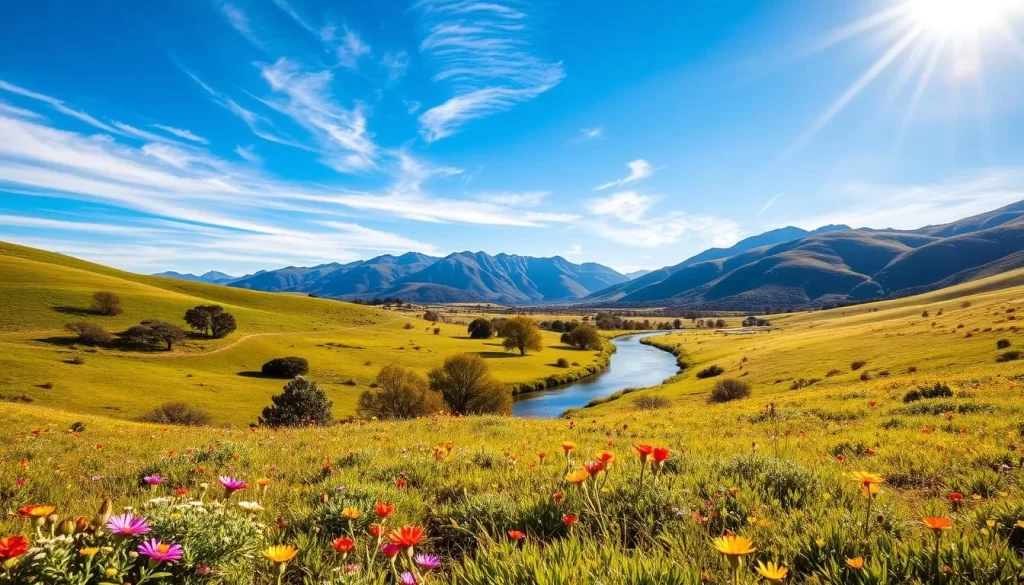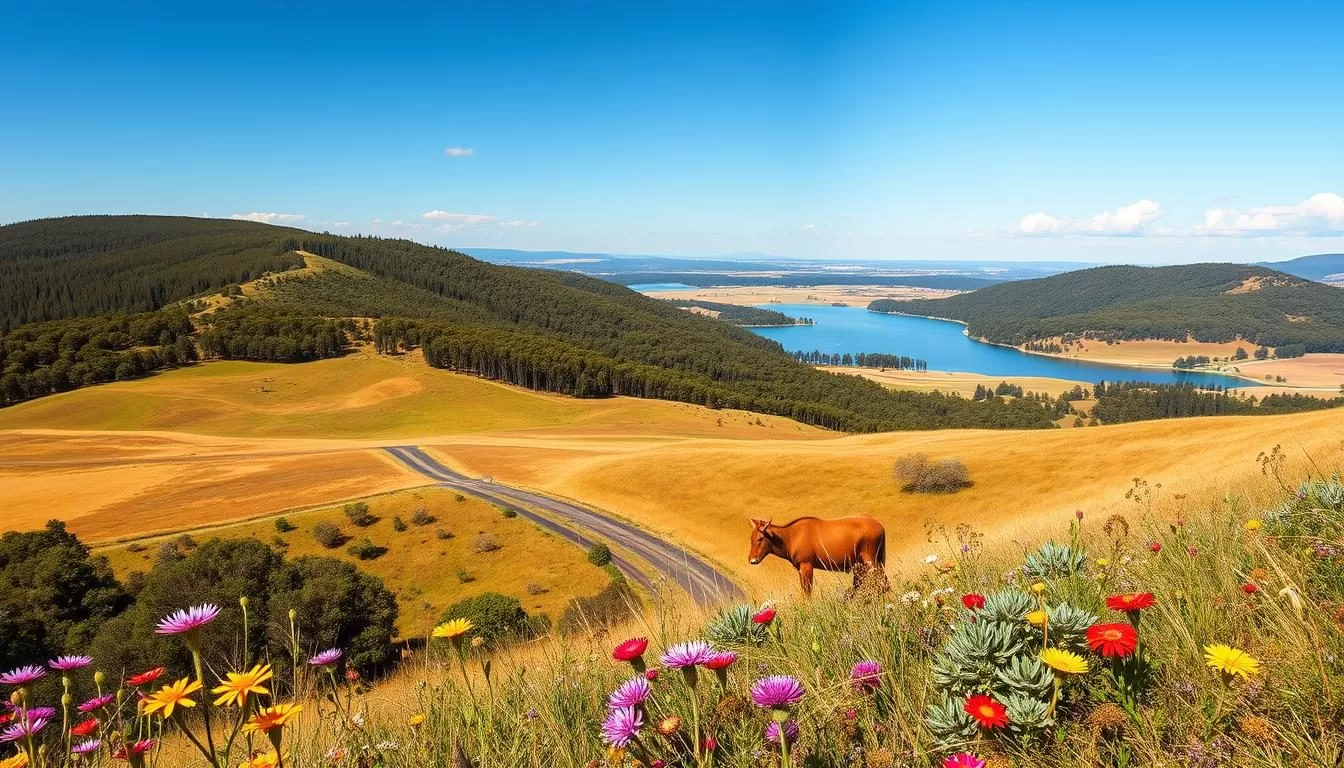Planning a trip to the Australian Capital Territory? Timing is everything. Knowing the best time to visit can make your experience unforgettable. Whether you’re exploring cultural landmarks or enjoying outdoor adventures, understanding the local weather is key.
This region offers a unique blend of activities year-round. From vibrant festivals in spring to cozy winter escapes, there’s something for everyone. The weather plays a big role in shaping your travel plans, so it’s worth doing a little research before you go.
Ready to dive deeper? This guide will help you discover the best time to visit, ensuring you make the most of your trip. Let’s get started!
Understanding ACT’s Climate and Weather Patterns
Understanding the climate of this region can make your trip more enjoyable. The weather here is influenced by its unique location, offering a mix of warm days and cool nights. Knowing these patterns helps you plan activities and pack appropriately.

Average Temperatures and Rainfall Trends
The average temperature in this area ranges from mild to warm, depending on the season. Summers can be hot, with daytime highs often reaching the mid-80s (°F). Winters are cooler, with daytime temperatures averaging in the 50s (°F).
Rainfall is spread throughout the year, but the wettest months are typically in spring and early summer. On average, the region receives about 25 inches of rain annually. This balance of sun and rain makes it ideal for outdoor activities.
Daytime vs. Nighttime Conditions
Daytime and nighttime weather can vary significantly. During the day, the sun can make it feel warmer, especially in summer. However, nights tend to be cooler, with temperatures dropping by 10-15 degrees (°F).
This contrast means you’ll need to layer your clothing. A light jacket or sweater is often necessary for evenings, even in warmer months. Understanding these differences ensures you’re comfortable no matter the time of day.
- Plan outdoor activities for the morning or late afternoon to avoid the midday heat.
- Pack layers to adapt to changing temperatures throughout the day.
- Check local forecasts to stay updated on rainfall and temperature trends.
Seasonal Overview: Experiencing Australia Through the Year
Each season brings its own charm and opportunities for adventure. From sunny days to crisp nights, the weather here transforms beautifully throughout the year. Whether you’re a fan of warm summer festivals or prefer the cozy vibes of winter, there’s something for everyone.

Summer: Sunshine and Festivals
Summer here is vibrant and lively. Daytime temperatures often reach the mid-80s (°F), making it perfect for outdoor activities. Events like the Sydney Festival and Melbourne Cup draw crowds, offering a mix of culture and excitement. Pack light clothing and sunscreen to enjoy the sunny days.
Autumn: Mild Days and Golden Landscapes
Autumn is a favorite for many travelers. The weather is mild, with temperatures averaging in the 60s (°F). This is the ideal time for hiking or exploring local parks. The region’s foliage turns golden, creating a picturesque backdrop for your adventures.
Winter: Cozy and Crisp
Winter brings cooler temperatures, often dropping to the 50s (°F) during the day. It’s a great time to enjoy indoor activities like visiting museums or cozying up in a café. Nearby regions like New South Wales also offer winter sports for enthusiasts.
Spring: Blooms and Renewal
Spring is a season of renewal. The weather warms up, and the region comes alive with colorful blooms. Events like the Canberra Flower Festival showcase over a million flowers, making it a must-see. It’s the perfect time for outdoor picnics and leisurely strolls.
| Season | Temperature (°F) | Key Activities |
|---|---|---|
| Summer | Mid-80s | Festivals, outdoor adventures |
| Autumn | 60s | Hiking, foliage tours |
| Winter | 50s | Museums, winter sports |
| Spring | 60s-70s | Flower festivals, picnics |
No matter the season, this region offers unforgettable experiences. Plan your trip around the weather and events to make the most of your visit.
Australian Capital Territory, Australia: Best Months for a Weather-Savvy Trip
Choosing the right time to explore this region can make all the difference. The weather and crowd levels vary throughout the year, so picking the optimal month ensures a smooth and enjoyable trip. Let’s dive into the details to help you plan your visit.

Peak Travel Months and Climate Considerations
March is a fantastic time to visit, offering mild temperatures and fewer crowds. The average temperature ranges from 50°F to 70°F, making it ideal for outdoor activities. This month also marks the transition between seasons, providing a balance of pleasant weather and lower rainfall.
May is another great option, with temperatures averaging between 41°F and 59°F. The cooler climate is perfect for exploring local attractions without the summer heat. Plus, you’ll avoid the peak tourist season, meaning shorter queues and more relaxed experiences.
- March: Mild weather, fewer crowds, and vibrant local events.
- May: Cooler temperatures, ideal for outdoor exploration, and fewer tourists.
Compared to other parts of the country, this state offers a unique blend of cultural and natural attractions. The climate here is more stable than in neighboring regions, making it a top choice for travelers.
Local events also enhance the travel experience. For example, the Canberra Flower Festival in spring showcases stunning blooms, while autumn offers golden landscapes perfect for photography. These events align with the best travel times, adding cultural enrichment to your trip.
By visiting during these selected months, you’ll enjoy pleasant temperatures, fewer crowds, and a chance to immerse yourself in the local culture. It’s the perfect way to make the most of your journey.
Planning Your Trip: Weather and Temperature Insights
Getting ready for your next adventure? Weather plays a big role in making it memorable. Understanding the local climate and temperature trends ensures you’re prepared for anything. This guide will help you navigate fluctuating conditions and make the most of your trip.

Preparing for Fluctuating Conditions
Weather here can change quickly, especially during transitional seasons. For example, daytime temperatures might range from 50°F to 70°F in spring, while nights can drop significantly. Packing layers is essential to stay comfortable throughout the day.
Here are some tips to prepare:
- Check the average temperature for your travel dates to pack appropriately.
- Bring a mix of light and warm clothing to adapt to sudden changes.
- Plan outdoor activities for mornings or late afternoons to avoid midday heat.
By staying flexible, you can enjoy your holiday without weather-related surprises.
Understanding Local Forecasts and Averages
Local forecasts are your best friend when planning your itinerary. They provide real-time updates on temperature, rainfall, and wind conditions. For instance, summer temperatures can exceed 113°F in some regions, while winter averages are much cooler.
Use this data to plan your time effectively:
| Season | Average Temperature (°F) | Tips |
|---|---|---|
| Summer | 85-95 | Stay hydrated, avoid midday sun |
| Winter | 50-60 | Pack warm layers, enjoy indoor activities |
| Spring | 60-70 | Perfect for outdoor exploration |
| Autumn | 55-65 | Ideal for hiking and sightseeing |
By integrating these tips into your plans, you’ll be ready for any weather. Whether you’re hiking, sightseeing, or relaxing, understanding the climate ensures a smooth and enjoyable trip.
Local Events and Festivals to Enhance Your Visit
Immerse yourself in the vibrant culture of the region by exploring its local events and festivals. These celebrations offer a unique glimpse into the city’s heritage and traditions, making your trip even more memorable. Whether you’re a fan of art, music, or food, there’s something for everyone to enjoy.
Celebrations, Cultural Events, and Public Holidays
Public holidays and cultural events are a great way to experience the local way of life. For example, the Captain Cook Festival celebrates the region’s maritime history with live performances and interactive exhibits. These events often feature traditional music, dance, and food, giving you a taste of authentic culture.
Many festivals are free to attend, making them accessible to all travelers. The Royal Botanic Gardens host seasonal events that showcase the area’s natural beauty and artistic talent. Plan your visit around these dates to enjoy a richer travel experience.
Seasonal Festivals in Canberra and Beyond
Seasonal festivals add a special charm to your trip. In spring, the Floriade festival transforms the city into a floral wonderland, attracting visitors from all over. This event features over a million blooms, live music, and family-friendly activities.
Autumn brings the Canberra Balloon Spectacular, where colorful hot air balloons fill the sky. It’s a breathtaking sight and a must-see for photography enthusiasts. For more tips on planning your visit, check out this guide to the best weekends in.
| Event | Season | Highlights |
|---|---|---|
| Floriade | Spring | Floral displays, live music |
| Canberra Balloon Spectacular | Autumn | Hot air balloons, photography |
| Captain Cook Festival | Summer | Maritime history, performances |
By aligning your trip with these events, you’ll experience the region’s culture at its peak. For more insights on planning a festival visit, explore this .
Travel Tips for Navigating Diverse Weather Conditions
Exploring diverse climates requires smart preparation. Whether you’re heading to the north or planning a day at the beach, understanding the weather is key. Here’s how to stay comfortable and ready for any activity.
Packing Strategies for Outdoor Adventures
When packing for outdoor adventures, versatility is your best friend. Start with layering basics like moisture-wicking shirts and lightweight jackets. This approach works well in regions like the northern territory, where temperatures can vary significantly.
Here’s a quick checklist for your next trip:
- Layering essentials: Lightweight tops, fleece jackets, and waterproof outerwear.
- Versatile footwear: Hiking boots for trails and sandals for the beach.
- Weather protection: Pack a compact umbrella and waterproof bags for electronics.
Travelers in the northern hemisphere often recommend packing items that serve multiple purposes. For example, a scarf can double as a blanket or sunshield.
Preparing for Sudden Weather Changes
Weather can shift quickly, especially in transitional seasons. In areas like the north, temperatures can drop sharply at night, even after a warm day. Always carry a light jacket or sweater for cooler evenings.
Protecting your gear is equally important. Use waterproof cases for phones and cameras, and keep a small towel handy for unexpected rain. These tips ensure you’re ready for any activity, from hiking to sightseeing.
For more insights on planning your trip, check out this guide to diverse climates.
Essential Items for Beach and Hiking Trips
If you’re heading to the beach, pack sunscreen, a wide-brimmed hat, and a reusable water bottle. For hiking, bring a sturdy backpack, trail snacks, and a first-aid kit. These items ensure you’re prepared for any adventure.
Remember, the key to successful travel is adaptability. By packing smart and staying informed, you can confidently navigate any climate. For more tips, explore this guide to weather-savvy trips.
Conclusion
Ready to make the most of your next getaway? Understanding the weather and seasonal patterns can transform your travel experience. From mild autumn days to vibrant spring festivals, each season offers unique opportunities to explore.
Planning your trip around local events and weather trends ensures you’ll enjoy every moment. Whether it’s a cozy winter escape or a sunny summer adventure, knowing the best time to visit helps you pack smart and stay comfortable.
For more tips on budget-friendly travel, check out this guide to maximizing your travel budget. With the right preparation, your next trip will be unforgettable!
The above is subject to change.
Check back often to TRAVEL.COM for the latest travel tips and deals.


